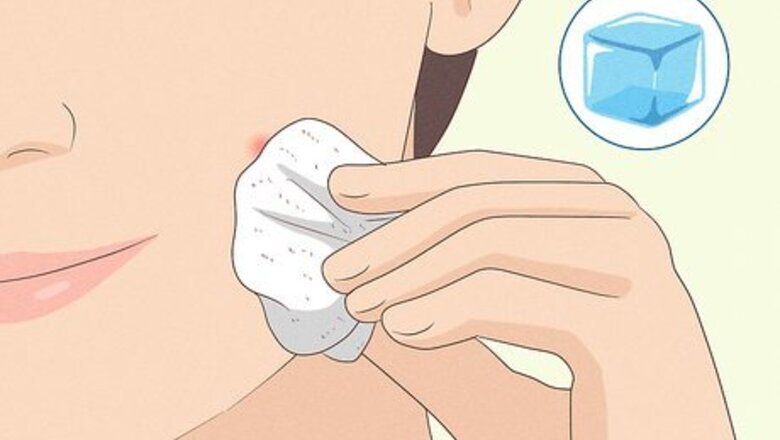
views
Here are 13 effective ways to get rid of swollen, red pimples fast.
Ice Cube
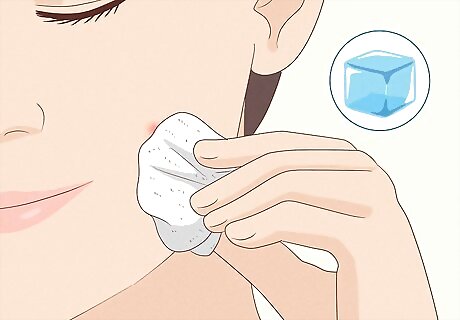
Wrap an ice cube in a towel for a short-term fix. Hold it against the pimple so only the cloth is touching your skin, and leave it there for 5 to 10 minutes. The cold helps contract the blood vessels underneath the skin, making the pimple less red and obvious.
Pimple Patches
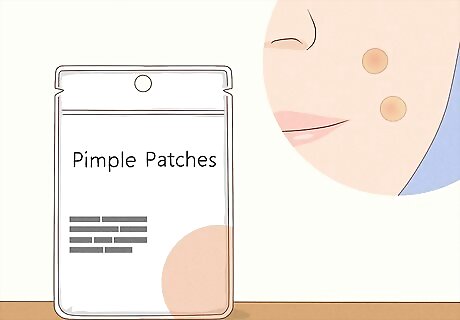
Stick these over the pimple for a few hours. These draw pus out of pimples so they heal faster. You can buy them at a pharmacy as "hydrocolloid bandages" (which are cheaper), or as "pimple patches" (which sometimes have extra meds for deep, painful pimples). Either way, gently wash and dry the skin around the pimple and stick the patch over it. You might see the patch absorbing gunk within a few hours, and can leave it on for up to 12.
Concealer
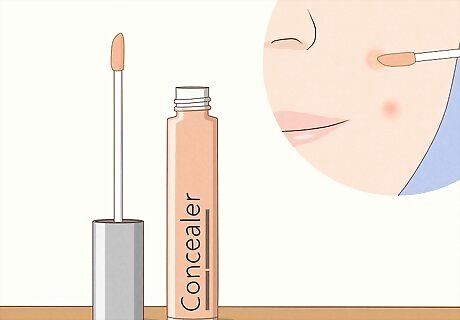
Hide the pimples with makeup. Moisturize your skin, then cover your zits with a light layer of concealer the same shade as your skin. Apply a matching foundation to the rest of your face, and blend the concealer and foundation together using a clean brush or makeup sponge. If this doesn't do the trick, try a color correcting product. Green or yellow tones help counteract the red color of the pimple. Using hypo-allergenic makeup is a good idea when you have a breakout.
Green Tea
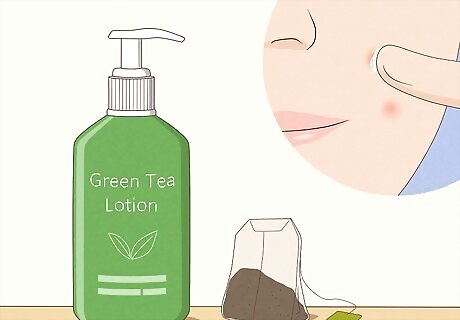
Try a green tea lotion or a used tea bag. Green tea on your skin might fight the bacteria infection that causes redness and swelling. A lotion with green tea extract as one of its main ingredients is probably your best bet, but in a pinch you could put a cool, wet tea bag over the pimple. Repeat once a day.
Crushed Aspirin
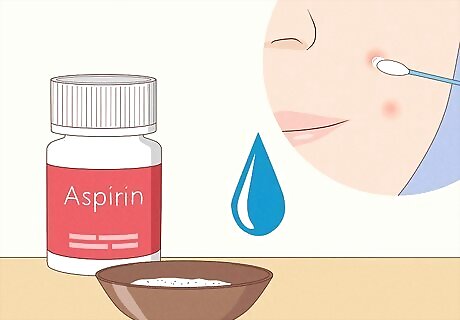
Try this folk remedy if you have aspirin handy. Crush an aspirin into a powder, mix it with a few drops of water to make a paste, then dab it over your pimple with a cotton swab. There's not much evidence that this helps, but it's an easy thing to try. Don't try this if you're under 12 years old, or if the acne started because the skin was irritated (from a headband, for instance).
Tea Tree Oil
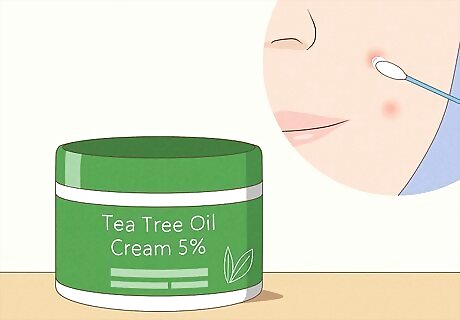
Dab a tea tree oil cream onto your acne. Look for a cream that has about 5% tea tree oil, and dab it over the pimples with a cotton swab. This is one of the most promising natural remedies, but (like all good acne treatment) it does take time to work. Repeat this every day to help your skin heal. If you haven't used tea tree oil before, it's not a bad idea to do a patch test on your arm first, just to see if you're allergic. You can buy pure tea tree oil instead and dilute it yourself on a kitchen scale, adding 1 gram of tea tree oil for every 19 grams of vegetable oil (not water). Jojoba oil is a good choice, since it helps reduce inflammation (while some other oils could clog pores and make things worse).
Honey and Cinnamon
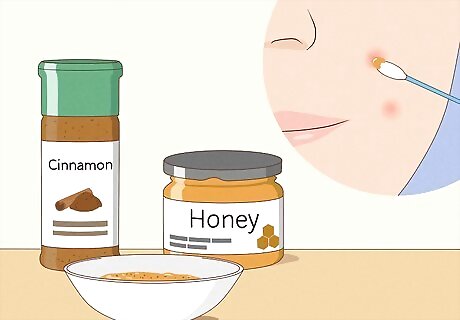
This treatment is safe but might not be super effective. A dab of honey, especially with cinnamon stirred in, is a cheap and easy pimple spot treatment. Both of these foods can fight bacteria. It's not super reliable when it comes to acne, but it could make the difference. If you have hay fever, go for a honey face mask or other skincare product with honey instead. These should use honey that's had all the pollen filtered out, so it doesn't cause allergies.
Face Mask
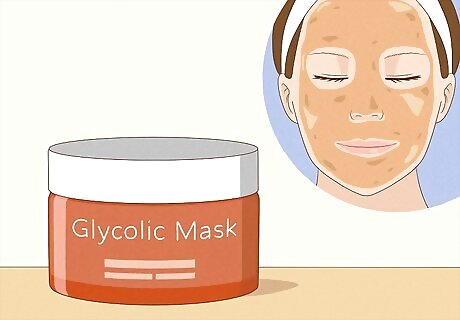
Buy a moisturizing face mask marketed for acne. Your best bet is usually a basic, storebought product, maybe with an alpha hydroxy acid in the ingredients. (This could be listed as AHA, glycolic acid, or lactic acid.) These are some of the cheaper and gentler face masks, and also better against acne than the harsh ones with lemon juice or the fancy ones with exotic, untested ingredients—so that's a win-win. Test a new product by dabbing it behind your ear and leaving it there for an hour or two to see if your face reacts badly. If you're putting the skin mask near your eyes, protect the sensitive skin there with a light dab of petroleum jelly. A clay mask with jojoba oil seems to work well for some people. Use it 2 or 3 times per week over your whole face or just over the area with acne.
Benzoyl Peroxide
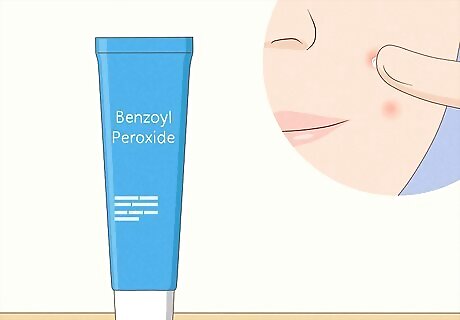
This over-the-counter drug is a good first choice for swollen pimples. This can take a few weeks to work, but that's still better than most home remedies. Usually you wipe this over the pimple once or twice a day, but follow the instructions on the packet. This stings or irritates some people's skin. You can try it once every other day at first to see if you get used to it. If this doesn't work, you could try azelaic acid or a retinoid, or ask a doctor or dermatologist for a stronger prescription treatment. Salicylic acid, another very common over-the-counter acne drug, is usually better for whiteheads and blackheads instead of pimples.
Gentle Washing
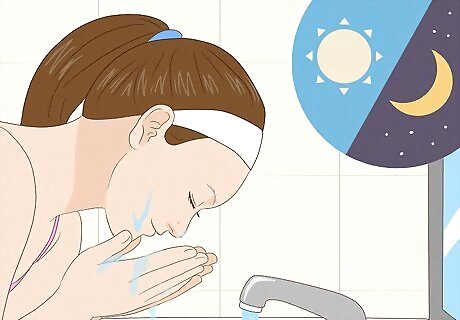
Wash twice a day with lukewarm water. Just rinse the acne-covered area and wipe it gently with clean hands. Washing too often, scrubbing too hard, or using a rough washcloth can all make the acne worse. Also wash your skin after you've been sweating. An oily scalp can cause acne around your hairline. Shampooing more often can help if your hair gets oily fast. You can also wash your face with a gentle cleanser. Some cleansers contain salicylic or glycolic acid, which can help open your pores and make your acne a little better.
Moisturizer
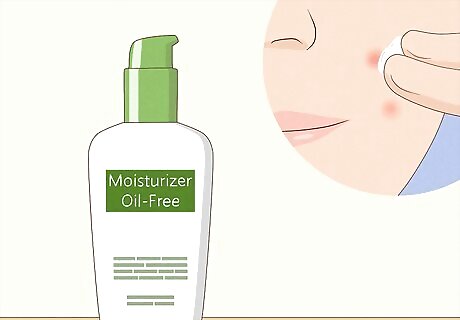
Moisturize if you're using harsh treatments. Many acne treatments—benzoyl peroxide, tea tree oil, aspirin, and others—can dry out your skin. It might feel a bit odd, but moisturizing dry skin can actually help keep acne under control. Moisturize after you wash, daily or whenever your skin feels dry. Look for a moisturizer labeled "oil-free", "non-comedogenic", or "won't clog pores."
Dietary Changes
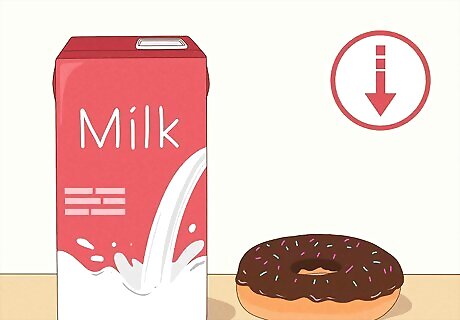
Try eating less sugar and milk. This is not a super-studied topic, but it seems like some people clear up their acne if they eat lower-glycemic foods (that means eating less sugar and simple carbs), and drink less milk. Give it a try for a few weeks and see if it works for you. It's not all dairy products—cheese and yoghurt seem fine. Skim milk has the biggest link to acne, so even switching to reduced fat or whole fat milk could help.
Hypo-Allergenic Makeup
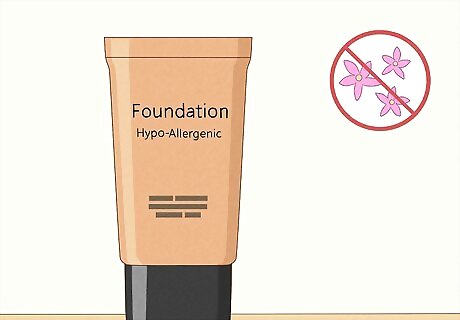
Try switching to lower-allergen makeup. Sometimes, acne is caused by makeup products. Test this out by switching to fragrance-free, hypo-allergenic makeup products for a few weeks. There's a long list of ingredients that can cause issues, but the most common culprits are fragrances, followed by preservatives like paraben or methylisothiazolinone. Even hypo-allergenic makeup can cause issues. If you think makeup is giving you acne, a dermatologist or allergist can help you figure out what you can use. Don't forget to remove your makeup before going to sleep.
















Comments
0 comment